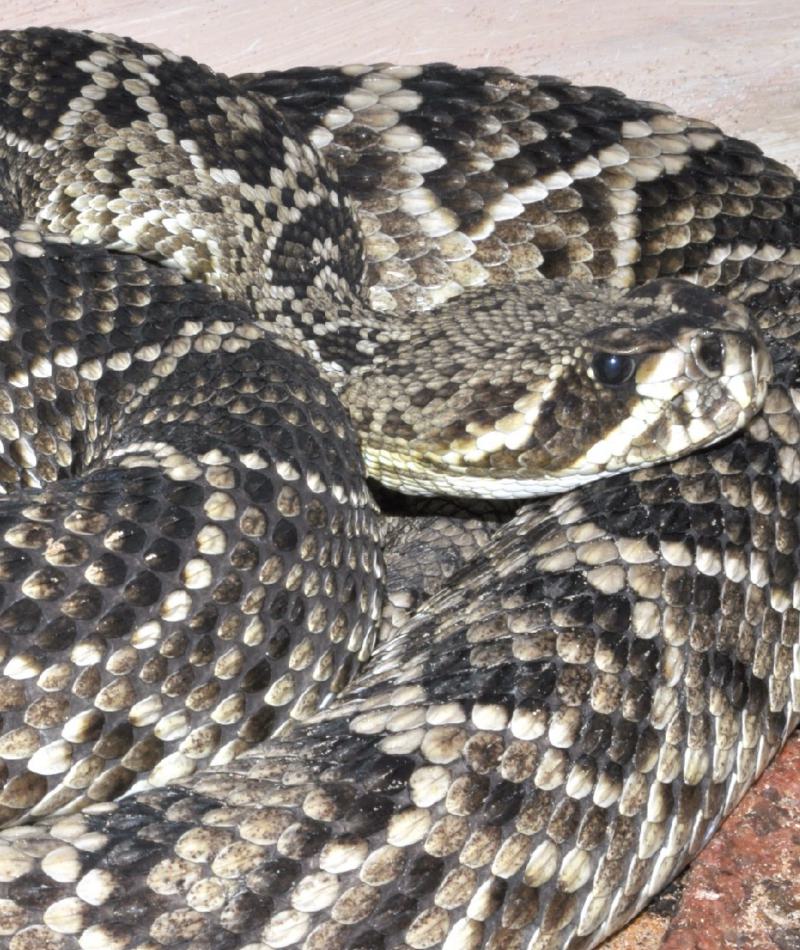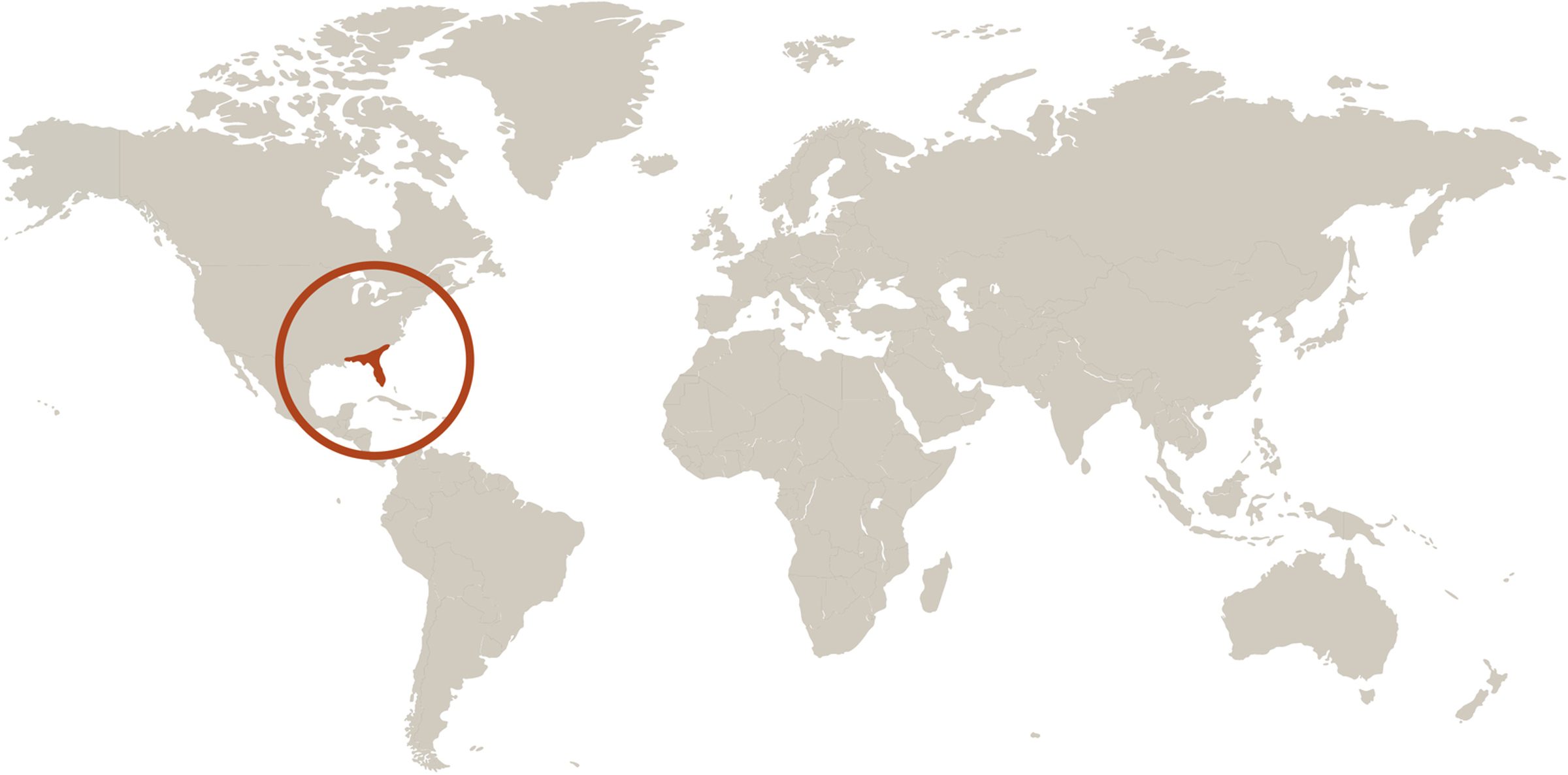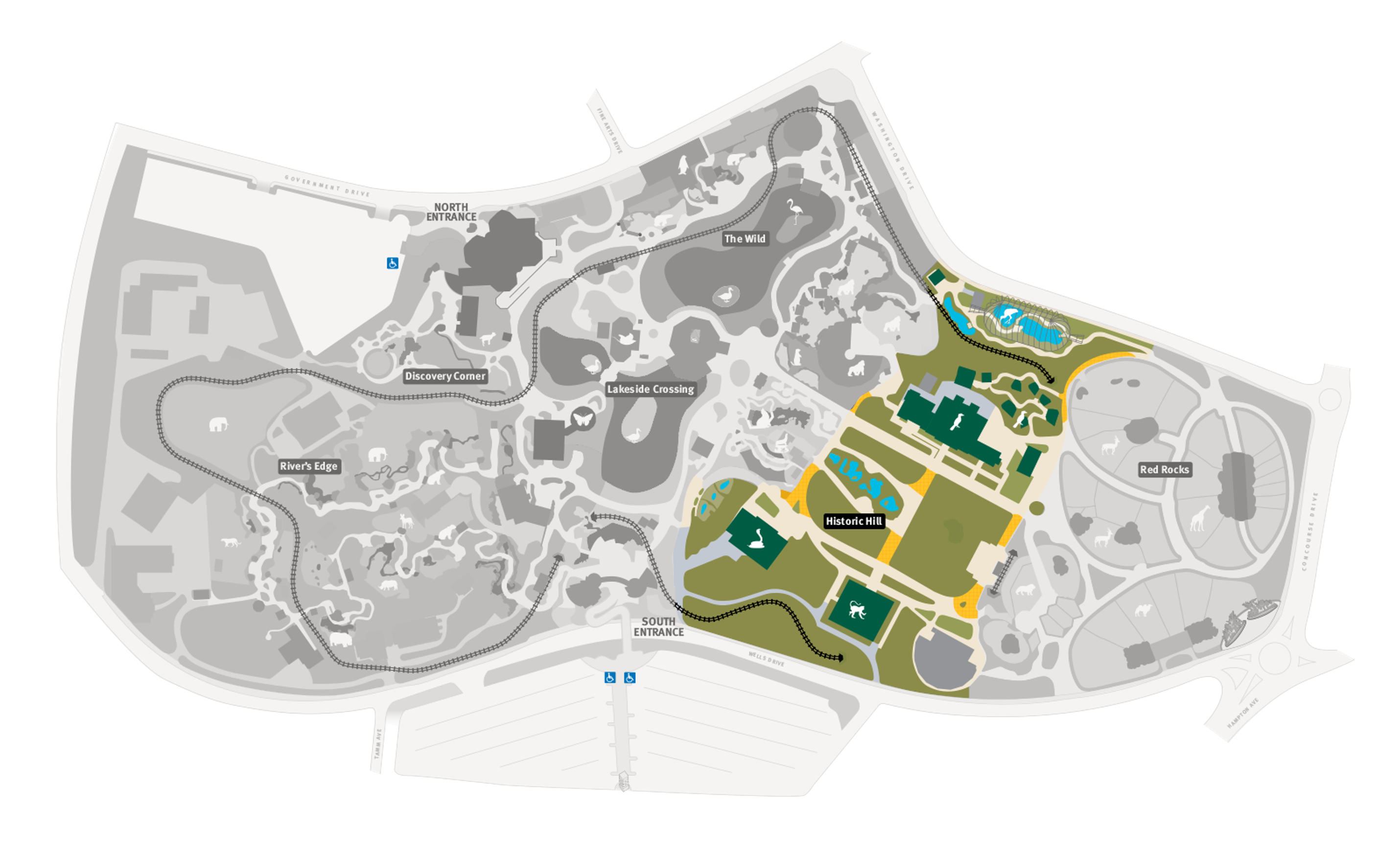
Eastern Diamondback Rattlesnake
Crotalus adamanteus
Did you know?
- Eastern diamondback rattlesnakes are part of the Viperidae family, which they share with other vipers.
- Their name comes from the diamond-shaped pattern on their back.
- They live in woodlands and scrublands in the Southeastern United States and the Florida Keys.
- They are one of the largest rattlesnakes in the world.
- Females usually birth six to 21 live snakes at a time.
Adaptations
One of the most obvious adaptations of eastern diamondback rattlesnakes is their size. Adults can grow to be over six feet long, making them one of the longest venomous snakes in North America. They often weigh about 10 pounds. Their size enables them to be amazing ambush predators. Like many snakes, they have heat sensors that enable them to locate prey in the dark.
Reproduction
Eastern diamondback rattlesnakes are solitary, unless they are mating. Males will compete for females during the mating season, usually by engaging in a type of snake “wrestling” where the males become intertwined. Females give birth to live snakes within a burrow or similarly protected space. Hatchlings are about 15 inches long.
Threat Level
- Unknown
- Common
- Near Threatened
- Threatened
- Endangered
- Critically Endangered
- Extinct in the Wild
Least Concern
The population of Eastern Diamondback Rattlesnakes is decreasing, but they are widespread in their habitats.
Range
Southeastern United States and the Florida Keys
Habitat
Woodlands, abandoned agricultural and logging areas

We care about Eastern Diamondback Rattlesnakes
Eastern diamondback rattlesnakes are hurt by habitat loss due to urban development and agriculture.
The
Saint Louis Zoo participates in the Association of Zoos and Aquariums'
Species Survival Program for eastern diamondback rattlesnakes by
supporting this species at the Zoo. Learn more about how we are helping
wildlife around the world.
Find this animal in Historic Hill

SAINT LOUIS ZOO ZONE
Historic Hill
Historic Hill is a lovely stroll through one of the oldest parts of the Saint Louis Zoo. From the 1904 World’s Fair Flight Cage to the Spanish architectural flavor of the 1920s in the Bird House, Primate House and Herpetarium to the finishing touches of our thoroughly modern exhibits, this area of the Zoo has a unique ambiance and a nostalgic history that make it a great destination.

